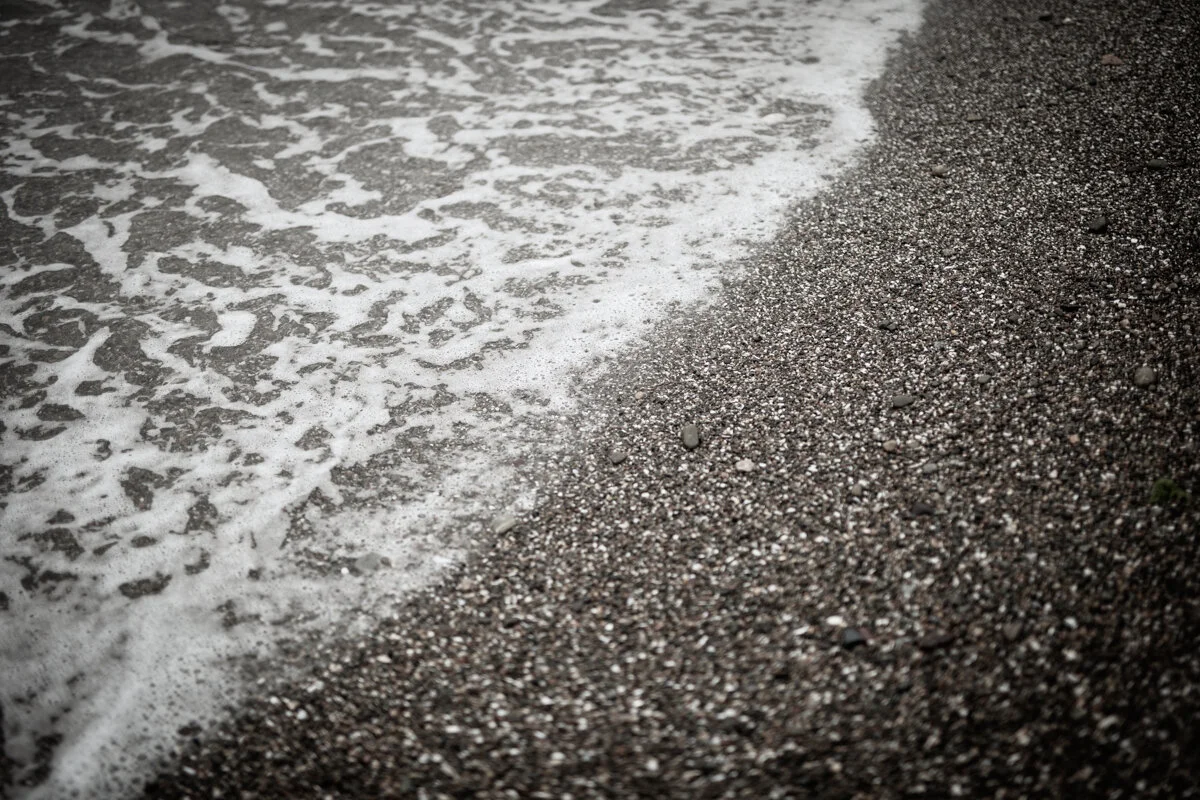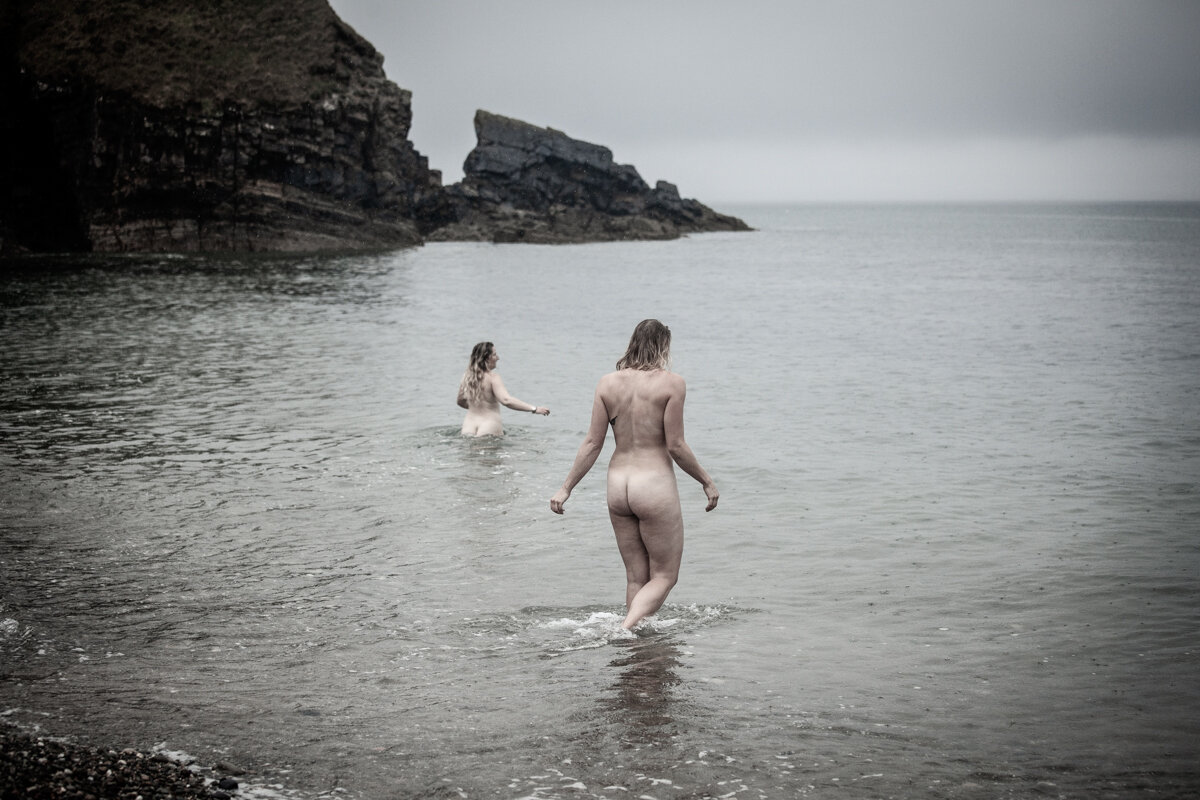Perambulating on a recent filthy Summers evening I wasn't expecting to take any pictures so left the house with my older camera and a 35mm lens (not a very versatile landscape setup imo) but then the light got good and there was some drama to shoot. The tide was coming in rapidly and with storm driven waves surging up the beach and limited by my choice of lens I had to outrun the waves to get a shot. Inspired somewhat by Robert Capa’s war photography (obviously my evening stroll was thankfully free of any combat induced terror) his maxim 'If your pictures aren't good enough, you're not close enough' seemed to apply here and I had to risk the horror of wet socks to get the composition I wanted. Shooting at a small aperture to allow a slower shutter speed to capture some of the drama of the waves without a tripod, I accepted camera shake as an inevitability. I'm not drawing a parallel with Capa's images shot on Omaha Beach during the D-Day landings but that's kind of what I had in mind as I took a soaking from a wave exploding against a rock behind me. An element of recklessness can be useful in any artistic endeavour and I suppose that by its nature and despite best efforts there is always a recklessness in war photography as a result of placing yourself in that setting in the first place. In other forms of photography including the usually sedate types like shooting landscapes; embracing abandon is a useful creative venture too but the life expectancy tends to be longer.
A little about Robert Capa. After humble beginnings in Budapest before spending formative years in Vienna, Prague and Berlin, which were important cultural cities at the time, Endre Freidmann relocated to Paris to escape the rise of Hitler. In Paris Freidmann adopted the pseudonym Robert Capa and went on to cover 5 major conflicts in his time before meeting his death by landmine in France's war in Vietnam in 1954 at the age of 40. His description of accompanying a US regiment during the D-Day landings and the 11 photographs that remained after fear, water and logistical challenges had conspired to destroy most of the images he made, are in combination perhaps the most concise insight into the horror of the day. His career first took off with coverage of the Spanish Civil War working alongside his lover and creative partner Gerda Taro who was killed near Madrid whilst on assignment in 1937. He later worked with Ernest Hemingway who was covering the war as a journalist before writing For Whom The Bell Tolls, a great read btw. He was influential in the lives of several great novelists as after WWII he travelled to the Soviet Union with John Steinbeck for his book A Russian Journal. He was a founder member and later president of the Magnum Photos agency. A fascinating life worth reading up on. As an avoider of war zones, consider these shots the best I can do in tribute.
One last thing for music fans who have read this far. Taro by Alt-J is about his death and ultimate reunion with Taro, his lover whose death he never really got over.































